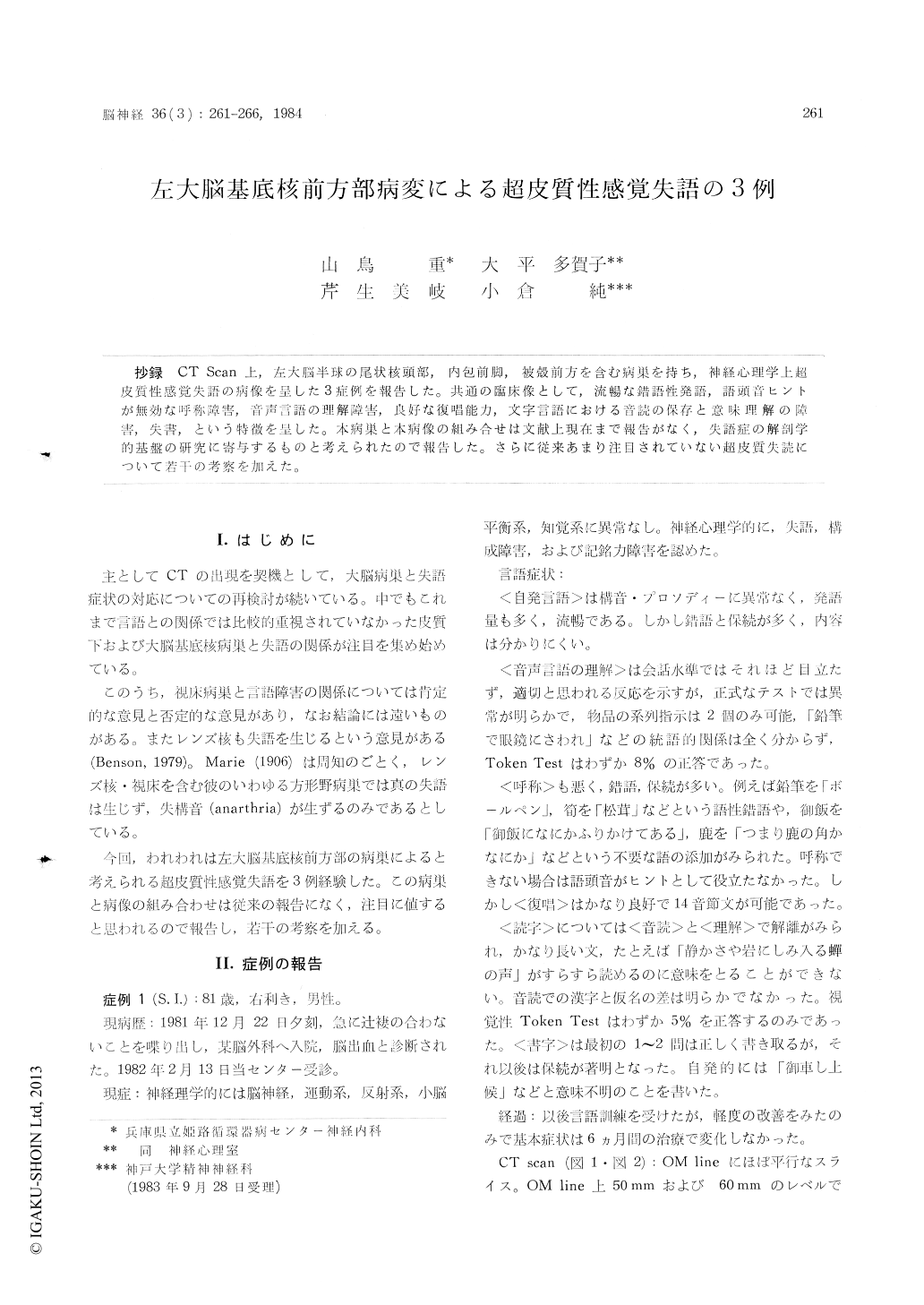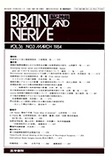Japanese
English
- 有料閲覧
- Abstract 文献概要
- 1ページ目 Look Inside
抄録 CT Scan上,左大脳半球の尾状核頭部,内包前脚,被殻前方を含む病巣を持ち,神経心理学上超皮質性感覚失語の病像を呈した3症例を報告した。共通の臨床像として,流暢な錯語性発語,語頭音ヒントが無効な呼称障害,音声言語の理解障害,良好な復唱能力,文字言語における音読の保存と意味理解の障害,失書,という特徴を呈した。本病巣と本病像の組み合せは文献上現在まで報告がなく,失語症の解剖学的基盤の研究に寄与するものと考えられたので報告した。さらに従来あまり注目されていない超皮質失読について若干の考察を加えた。
We reported three cases of an aphasic syndrome caused by unusual lesion distribution. Cur patients, language disorders could be summarized as trans-cortical sensory aphasia and showed following symptoms; ( 1) fluent paraphasic verbal output, ( 2 ) anomia which was not facilitated by cueing, ( 3 ) impaired comprehension of spoken language, ( 4 ) preserved capacity of repetition, ( 5 ) preser-ved ability of reading aloud with impaired comp-rehension of the written material and ( 6 ) agra-phia. In addition, all had no associated physical neurological signs such as hemiparesis or hemi-anopsia. All were right handed.
All three cases showed the similar lesion dist-ribution by computed tomographic scanning of the brain. All had low density areas in the anterior portion of the left basal ganglia including the head of the caudate nucleus, the anterior portion of the putamen, the anterior portion of the ante-rior limb of the internal capsule and the nearby white matter. Case 2 also had the small right he-misphere lesion in the white matter near the anterior portion of the lateral ventricle.
All three cases showed the similar lesion dist-ribution by computed tomographic scanning of the brain. All had low density areas in the anterior portion of the left basal ganglia including the head of the caudate nucleus, the anterior portion of the putamen, the anterior portion of the ante-rior limb of the internal capsule and the nearby white matter. Case 2 also had the small right he-misphere lesion in the white matter near the anterior portion of the lateral ventricle.
Transcortical sensory aphasia with this lesion distribution has not been reported. We attributed the causative damage to lesions of the white mat-ter and not to lesions of the basal ganglia per se. It was also speculated that fluent aphasia can be produced by the anteriorly situated white matter lesion if issuing fibers from the Broca's area were spared.
Finally a possible anatomoclinical correlation for"transcortical alexia" (preserved oral reading and impaired reading comprehension) was attempted. The symptom is probably a reflection of the fact that the posterior speech area including the angu-lar gyrus was left intact.

Copyright © 1984, Igaku-Shoin Ltd. All rights reserved.


